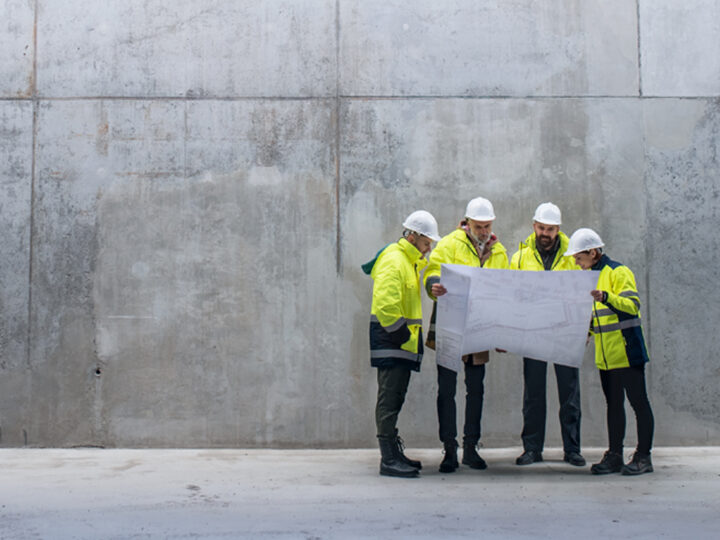
Engineers Acting as Special Inspectors Should Be Knowledgeable about What Is Required from Them and Take Care to Provide What Is Required.
By Sarah A. Johnson, Esq.
In some jurisdictions, construction projects may require additional special inspections beyond the typical municipal inspections mandated by the local building department. Special inspections are typically used to verify that work considered critical to the safety of persons and the protection of property has been constructed in accordance with the plans and specifications. While the building code, if adopted by the municipality, may mandate special inspections on projects of a certain nature, such as hospitals or schools, the building department may also mandate special inspections in other instances after reviewing the plans and specifications, and on a project-by-project basis.[1]
The individuals performing the special inspections are required to have specialized knowledge, skill, and experience in order to qualify to complete said inspections. It is not surprising that special inspectors are often licensed engineers. However, it is important that engineers understand the scope of services involved when they act as special inspectors, as they may be required to provide more rigorous construction administration services than are typically required. By way of example, the building department and/or building code may require that the special inspector provide continuous special inspection while certain materials or components are being manufactured or installed.
It is important for an engineer acting as a special inspector to understand what is required by the building code or building department, as a failure to properly complete the required special inspections could prove catastrophic to the project and/or create liability for the engineer.
In Foltyn v. DeBerry, the Court of Appeal of California commented on a case involving an engineer who acted as a special inspector.[2] The case involved a claim of negligence and breach of contract by the plaintiff homeowner against the defendant engineer.[3] The plaintiff’s house was settling due to a variety of causes, including the fact that it was built on expansive soils.[4] The defendant engineer provided detailed engineering design calculations and plans for the repair involving a series of caissons and grade beams.[5] The municipality notified the plaintiff homeowner that a special inspector must continuously inspect the caisson excavations.[6]
The plaintiff hired the defendant engineer to be the special inspector.[7] Despite the requirement for a special inspector to continuously inspect the caisson excavations, the defendant engineer only inspected the work after the contractor drilled the holes in order to determine that they were the proper depth and in formational soil.[8] After the house experienced further settlement, the plaintiff homeowner sued both the engineer and the contractor.[9] The jury found that the defendant engineer was negligent in failing to continuously inspect the caisson excavations to ensure their proper depth.[10] However, the jury ultimately found that the engineer’s negligence did not cause the plaintiff any damages, as the caissons were sufficiently deep to be embedded in foundational soil.[11]
Although the defendant engineer in DeBerry was not ultimately found liable for the damage to the plaintiff’s house, the case illustrates how easily an engineer can fail to meet the requirements of a special inspection by assuming the more typical periodic inspections or observations to be sufficient.
Moreover, in cases where the required special inspections do not occur, the municipality may not issue an occupancy permit, which can result in a need to remove and redo the work altogether. In Grassi v. Yan, the Court of Appeal of California found that the evidence presented at trial was insufficient to support a judgment for the plaintiff contractor where the contractor continued paving concrete over his work before the required special inspections were made.[12] The defendant property owner hired the plaintiff contractor to construct a new garage on the property.[13]
However, the property owner refused to provide the contractor with the amount remaining on the contract after construction, alleging defects in the construction.[14] The contractor then sued for breach of contract, and the property owner filed a crossclaim for breach of contract and negligence.[15] The jury entered judgment on the contractor’s claim, but the court granted the property owner a new trial, finding that the jury’s findings were against the law and not supported by the evidence.[16] The contractor then appealed.[17]
On appeal, the appellate court highlighted the fact that the special inspector could not write a letter confirming compliance with the plans as required, and the building department would not issue an occupancy permit as a result.[18] The court also noted that the property owner’s expert explained that the property owner would be required to demolish and rebuild the garage.[19] The appellate court affirmed the trial court’s grant of a new trial on the basis of insufficient evidence to support the verdict.[20]
Although the engineer serving as the special inspector was not involved in the litigation in the Grassi case, many parties are likely to be brought into litigation where substantial portions of, or entire projects, must be redone for a failure to conduct the proper special inspections.
Engineers who perform special inspections should know the required scope of the inspections, adhere to those requirements, and take an active and assertive role in making sure that the inspections actually occur, if at all possible. With respect to the latter, it may be helpful if the engineer explains in writing to both the owner and the contractor(s) involved the stage(s) of construction at which the engineer should be contacted to inspect the work.
[1] Cal. Building Code §§ 1701.1.1; 1704A.1.1; 1705A.1.1.
[2] Foltyn v. DeBerry, No. D069930, 2017 Cal. App. Unpub. LEXIS 7465, *6 (Cal. Ct. App. Oct. 31, 2017)
[3] Id. at *10.
[4] Id. at *2-4.
[5] Id. at *4-5.
[6] Id. at *6.
[7] Id.
[8] Id. at *9.
[9] Id. at *10.
[10] Id. at *15, 20.
[11] Id.
[12] Grassi v. Yan, No. A100455, 2003 Cal. App. Unpub. LEXIS 8485, *4-7, 11 (Cal. Ct. App. Sept. 8, 2003)
[13] Id. at *2.
[14] Id.
[15] Id.at *1-3.
[16] Id. at *4-5.
[17] Id. at *5.
[18] Id. at *6-9.
[19] Id. at *9-10.
[20] Id. at *11.






